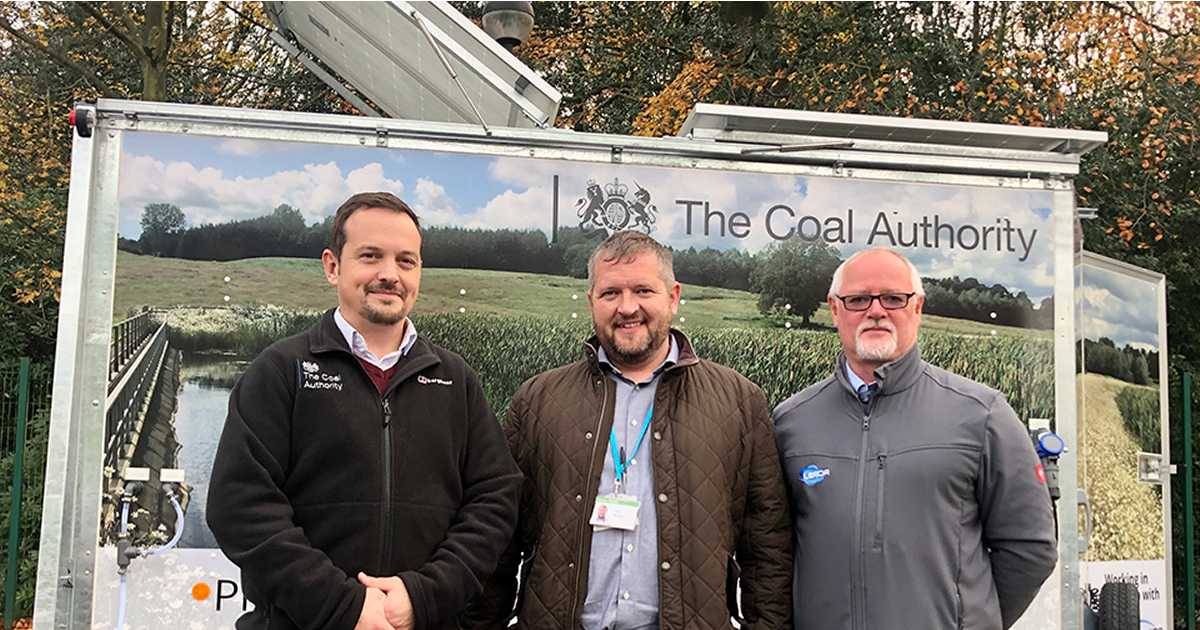
Image: Coal Authority (UK)
While deep pit coal mining ended in the UK in 2015, previous activity continues to impact the environment – and solar power has been helping to clean up the mess.
Prior to 1999, coal mine operators could just walk away from a mine once they were finished with it, without ongoing actions to address the threat of contamination to waterways and groundwater. This responsibility wound up in the lap of the Coal Authority, which is monitoring and dealing with mine water contamination issues at 76 sites.
Back in 2017, we reported on how solar energy was playing a significant role in providing electricity used in pumping mine water as part of the cleaning process, and it’s continuing to be utilised in new ways.
The latest solar powered tool to be deployed in the field will be a mobile “dosing trailer”.
Most of the Coal Authority’s schemes involve removing dissolved iron from the mine water, usually achieved through aeration cascades to oxidise the iron and settling lagoons and reed beds to remove the particulate ferric iron. When maintenance is being undertaken on these systems, it can temporarily reduce capacity to clean water.
In these situations, hydrogen peroxide has been added using shipping-container based dosing systems that require generators to power them and fuel storage given most sites don’t have mains supply power.
“That can carry with it a number of risks, including environmental risks,” said Andrew Hargreaves, Coal Authority operations contract service manager. “So we thought it would be very useful to have something small, portable, completely self-sufficient and stand-alone.”
A “Brilliant Piece Of Kit”
The new design dosing trailer sources most of the energy it needs from four solar panels mounted on its roof, which also charge a “5.12kW” (assumed to mean 5.12kWh1) lithium-ion battery system. In extended poor sunlight conditions, the battery can last 2 – 3 days and be recharged by a portable petrol powered generator.
“However, this charge cycle only takes 1 to 2 hours, so manual intervention is minimal,” says the Coal Authority.
The comparative small size of the solar dosing trailer means it’s easier to transport to remote sites – and it can be monitored and operated remotely.
The new system can also provide emergency response to an acid-flush event, where mine water suddenly experiences a significant decrease in pH – a situation that can extend for months. In this scenario, the trailer can dose the water with sodium hydroxide.
The system was developed in collaboration with Leada Engineering Ltd and Coal Authority contractor Severn Trent Services.
“We are excited to see months of collaborative work, to design and build this brilliant piece of kit, come to fruition,” said Severn Trent Services project manager Graham Osborn.
The trailer is expected to be on the road in the next few weeks.
Footnotes
- Learn more about the difference between power and energy in batteries ↩

 RSS - Posts
RSS - Posts



Speak Your Mind